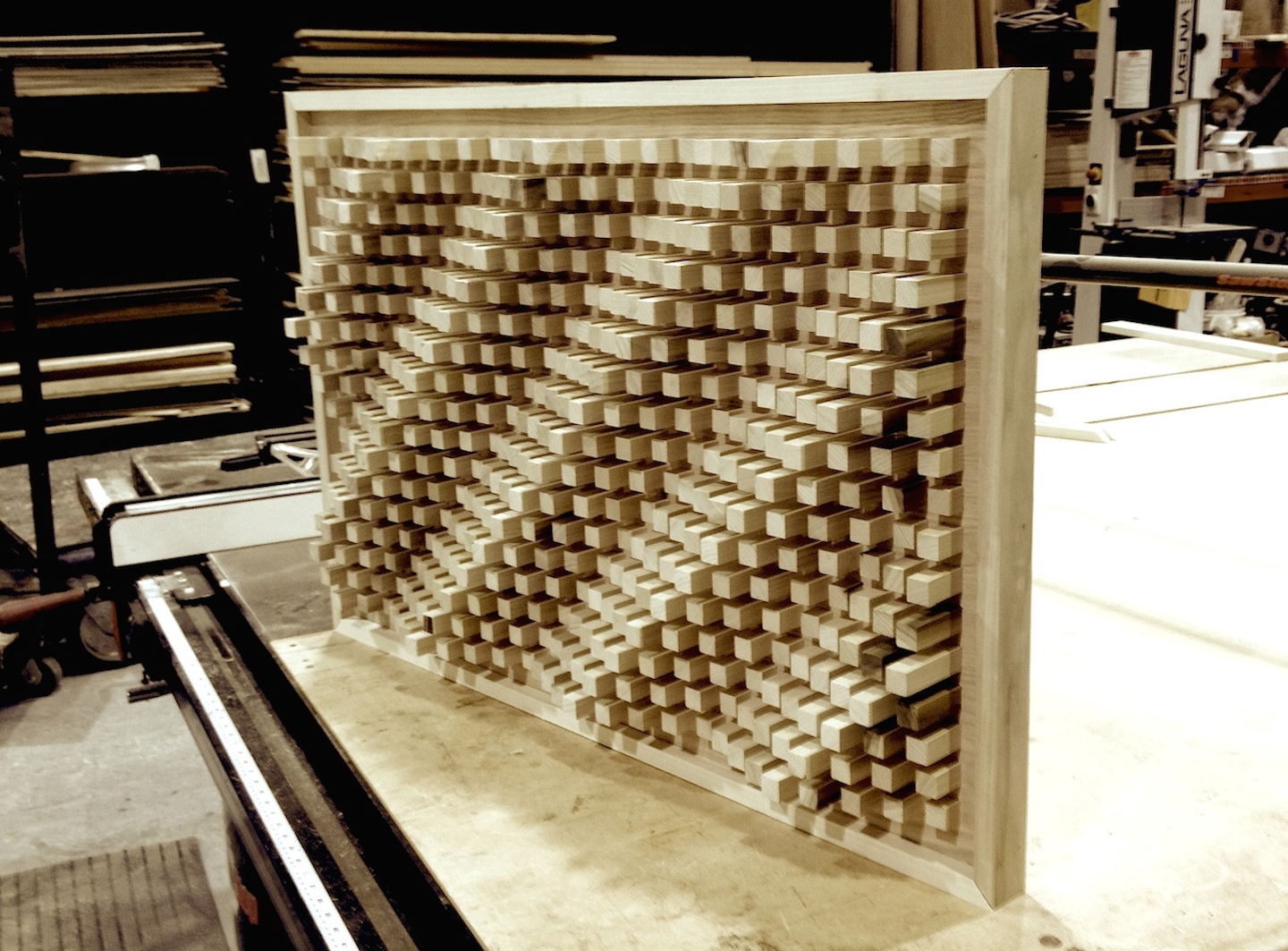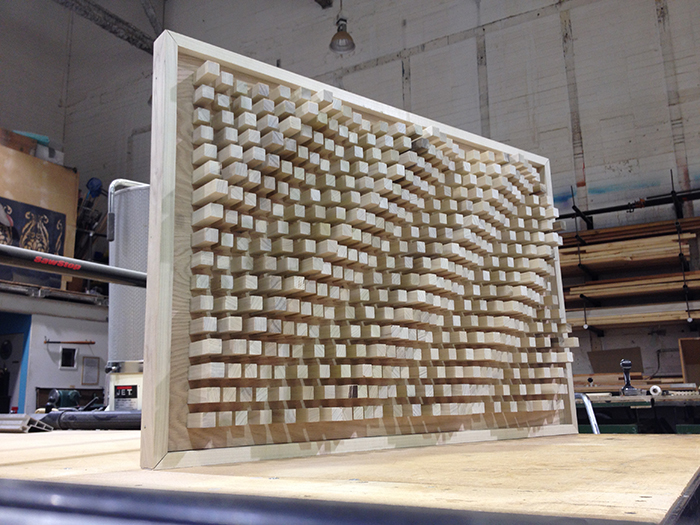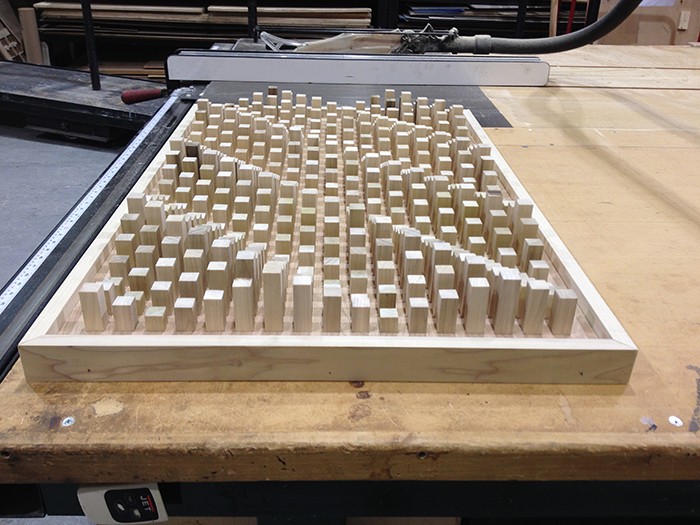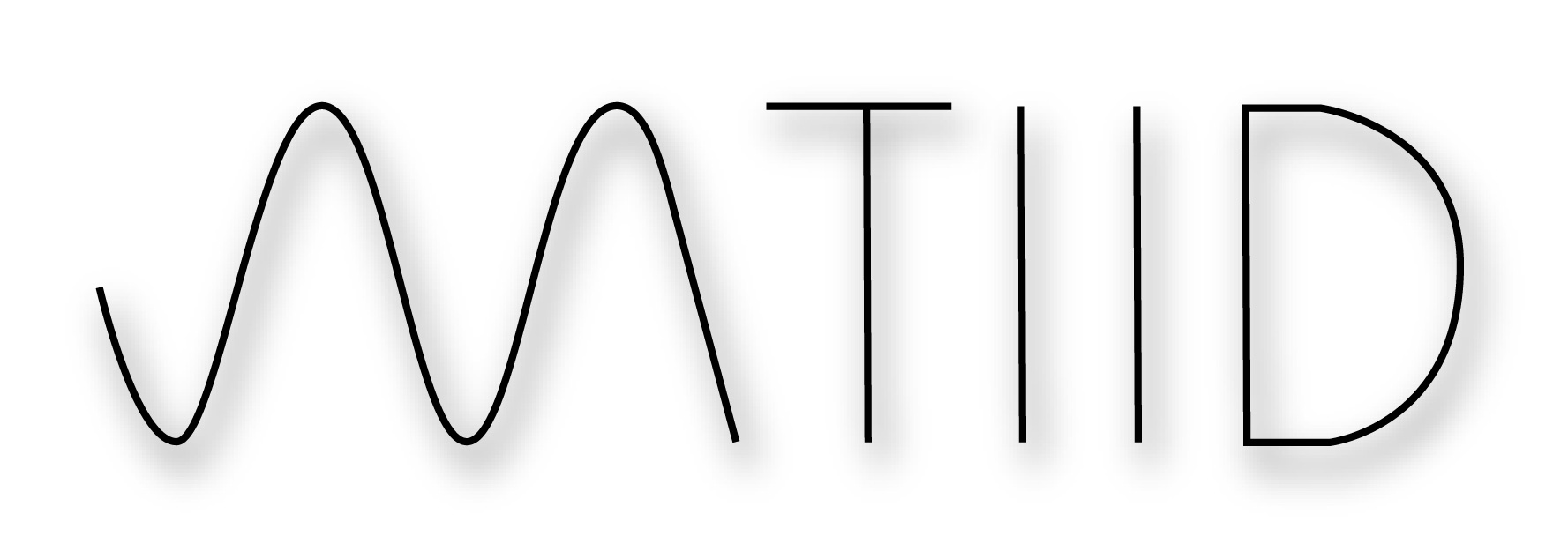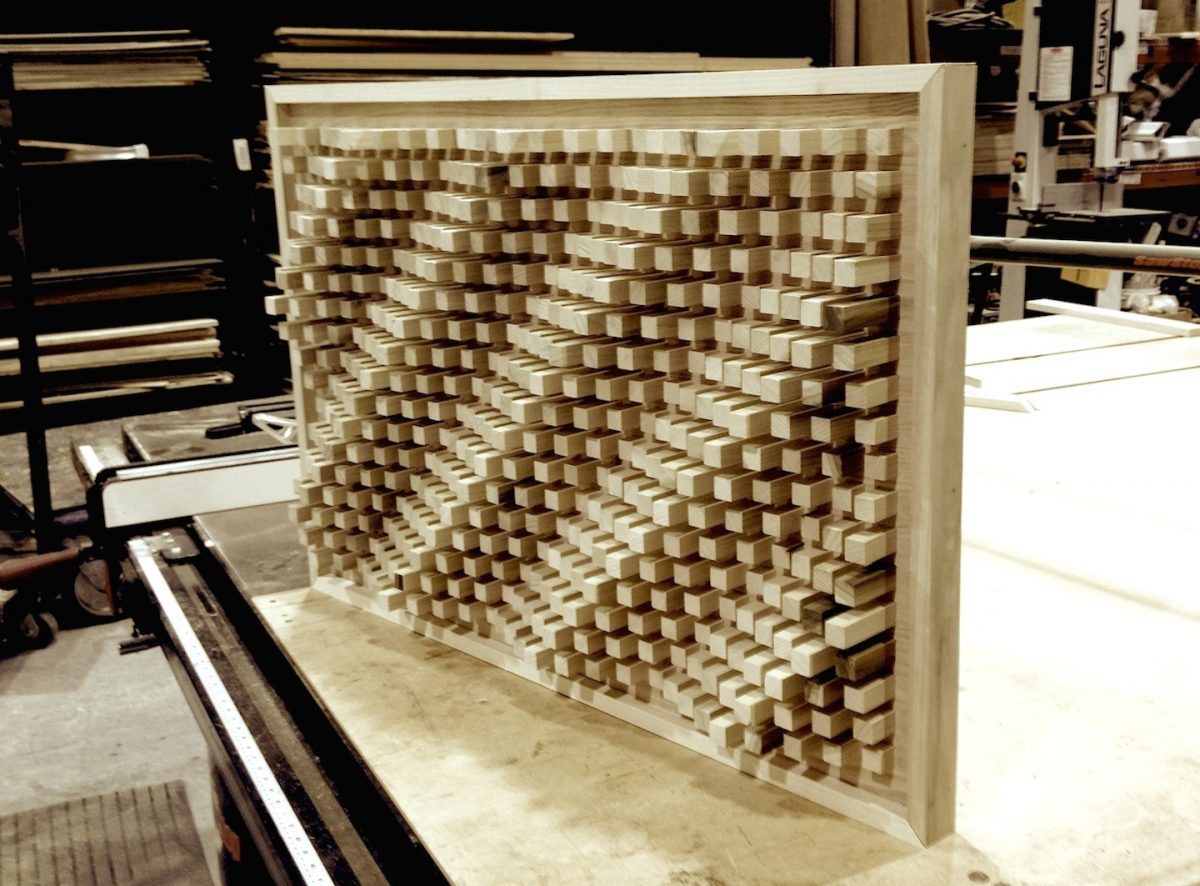Meason Wiley
Phase.1 is first piece in an ongoing series of topographical sculptures depicting information we cannot see – the complex harmonic relationships of sound – by creating an augmented physical sound/data imprint of various sonic phenomena. Topographic Art is essentially art depicting places, buildings, and natural prospects in a realistic and detailed manner. This work attempts to focus on a specific moment in time, capturing the sonic information of a single instant – the change in dynamics of a specific set of harmonics – and visualize those relationships within the framework of a massive array of wooden dowels. These sculptures are meant to function much like a three- dimensional snapshot of sonic behavior, utilizing methods of feature extraction to measure, condition, and re-interpret streams of sonic data, converting the unseen world of sound into a physical, tangible structure. This approach, which I call Sonic Topography, gives the viewer a unique perspective of sound in a way that is visually stationary – a physical manifestation of a sort of harmonic fingerprint – one that can be closely examined, experienced, and understood without the need, necessarily, for the aural reproduction of the sound itself. Much like a topographical map shows the geological contour of a specified terrain, these works attempt to show the complex envelopes of sound in a way that is similar to an FFT waterfall plot, but in a physical sense.
Phase.1 is a 2’x4’ sculpture made from apple plywood and seventeen rows of poplar dowels. This work represents the shifting phase relationships between multiple sine waves, with each row offset from the previous in series. A secondary sine wave is also present that is created from the offset patterns of each row as the dowels rise and fall across the piece. This 3D ripple could be considered a segment of a sound wave as it propagates through a medium. The plywood back of Phase #1 was digitally fabricated using a CNC router to create 459 equally spaced indentions (pixels) to mark where the dowels would go, and to hold them in place. Each dowel was then individually cut to a set size using a miter saw, glued, hammered in to the pixels, and leveled. The use of pixels to determine dowel position gives the work a “digital” representation of a waveform by referencing how digital systems sample continuous signals, with the number of dowels dictating the accuracy of replication.
Phase.1 was designed and fabricated at California Institute of the Arts in the Fall of 2014 and is currently on display at Kadenze, Inc. in Valencia, CA.
